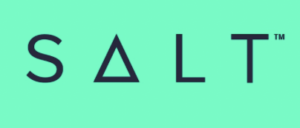There’s no doubt that cryptocurrency is on the rise globally. And according to Bloomberg, the crypto-loan market is at $5 billion and growing.
It’s becoming increasingly likely that other countries will embrace some form of cryptocurrency in their existing financial models. El Salvador, for example, became the first country to adopt Bitcoin as a legal tender in September 2021. The Central African Republic became that continent’s first nation to approve Bitcoin as legal tender.
And crypto loans are just one piece of this financial model.
Table of Contents
How do Crypto Loans Work?
A ”crypto loan” is a secured loan from a blockchain lender. It works like a traditional loan, but the collateral is your crypto holdings. A lender will issue a loan that you will pay back in installments. You get your crypto back at the end of the loan term.
Typically, the amount you can borrow with your crypto loan will be a loan-to-value ratio, or LTV, a percentage of the cryptocurrency you put up as collateral. You can borrow up to 50% of your crypto’s value with a lender like Binance. Or up to as much as 90% with a lender like Youholder.com. Bitcoin and Ethereum are the most popular cryptocurrencies accepted, but some lenders will take up to 40 different types of crypto.
Loan terms can be short-term, as little as one week to a year or more. Interest rates start at a range of 0% to 13.9%. Cryptocurrency lending rates may vary depending on the current market demand, and there are different rates per coin for any investment platform.
HODL (Hold on for dear life) is a crypto investor’s mantra. These loans attract investors who want to keep their investments, convinced that the value will increase over time but need liquidity. This is particularly true for crypto buyers who are using other loans to fund their crypto purchases. Crypto loans come with some high risks, the most noteworthy being that you’ll have to add additional crypto collateral if your crypto value decreases. They also charge high penalties for missed payments.
Types of Crypto Loans
There are two types of crypto loans: CeFi and DeFi.
- CeFi (Centralized Finance) loans are custodial loans. The lender has control over your cryptocurrency holdings during the repayment term.
- DeFi (Decentralized Finance) loans rely on smart contracts to ensure you follow the loan requirements. Though you keep control of your crypto assets, a lender can take action against your account if you miss a payment.
5 Top Crypto Lenders

Unchained Capital
They are a financial services company premiering in Bitcoin-backed loans to both businesses and individuals. Unchained Capital provides services to over 200,000 blocks and has no minimum deposit requirements or free deposit fees. They charge $20 withdrawal fees for individuals and $125 for businesses, and customer support is via FAQs and mail only. They do not consider a credit score that can benefit many individuals. The minimum loan amount is $10,000 for individuals and $100,000 for companies and up to $1,000,000 for both. They give you a loan for up to three years.
The average rate for a loan up to 1 year is about 11% (approximately), including the origination fee and interest rate. These rates vary as their respective purposes change too. At a maximum of 40% Loan-to-value, the interest rates are applied to loans and vary from region to region.

Salt Lending
Salt lends in USD currency can only support loans against several cryptocurrencies and have their native coin, the SALT token. They have an app, live chat, mail, phone, and form support. The minimum loan amount is $5,000, deposit fees and trading fees depend on the currency and network, 0% withdrawal fees, and interest rates from 5.95% to a maximum APR of 22.95%.
SALT provides individual and business loans to their customers with 3 to 12 monthly payment windows and LTV (Loan-to-Value ratio) of 30 to 70% with $0 origination or prepayment fees. SALT charges a fee for converting the user’s digital assets, which might be up to 5% of the total value.
How much a user can borrow with SALT is based on the membership the user purchases. Terms and rates change based on qualifications, loan amount, and additional collateral. A basic member can borrow up to $10,000 and choose repayment terms between 3 to 24 months. If the user selects a higher membership tier like big organizations, they can access a $1 million loan.
SALT charges higher repayment rates when compared with traditional loans offered through bank accounts and does not offer Interest accounts. Users can create up to 7 various accounts and only one personal account user.

SpectroCoin
They offer LTV ratios from 25% to 75%, allowing clients to get the most significant available crypto loan with their crypto collateral. Clients can get crypto credit as low as 25 Euros up to 1 million Euros, 40+ listed cryptocurrencies, supports USD, CAD, TRY AUD, and more; plus, you choose when to repay the loan.
SpectroCoin has a minimum of $3 deposit, deposit fees of $8.5%, and customer support via live social network, mail phone, and live support.
They offer multiple different loan plans where you choose the withdrawal amount, collateral amount, and currency. There are no additional fees as long as the loan is paid back in full before the maturity date, and you can extend the life of the loan if customers have a hard time paying back the loan.
Their native coin, Bankera Tokens, will have the best rates ranging from 6.95% to 12.95%. If you pay with another currency, the interest rates on each package will be 3% higher—no prepayment penalties and a 1-year loan repayment period.

SoFi
This platform only supports BTC, ETH, LTC, BCH & ETC and is only available in the U.S. and all 50 states, but they have an app that tracks 40 other cryptocurrency prices. The fees include a 1.25% trading fee, no ATM fees, no minimum deposit requirements, overdraft fees, you get ATM reimbursement fees, and you receive $10 when you start trading crypto assets.
Theirs is a purely custodial solution but mentions on their site that they may support crypto withdrawals on their platform in the future.

Nexo
Nexo offers services in more than 40 fiat currencies (fiat money is all kinds of money made legal tender by a government decree or fiat), 41 cryptocurrencies, and more than 200 jurisdictions, making it one of the most flexible crypto credit lines available.
If you’re hacked or lose your keys, your digital assets are protected by a $775 million insurance policy. They don’t charge hidden fees or commissions whether you deposit, withdraw, or hold funds. You may take money out and not lose your accumulated interest, or you can put money in at any time to earn even more.
Interest rates are based on a 4-tier system determined by the proportion of NEXO tokens in your portfolio compared to other assets in your portfolio. Rates begin at 0% and never rise over 13.9%. No installments are necessary, and you can pay off your balance in whole or in part whenever you choose without being tied to a predetermined payment plan, and you can repay your credit line using fiat, crypto, or a mix of the two.
If your loan-to-value (LTV) is less than 20%, and you are a Gold or Platinum customer, you may earn premium rates from 0% -1.9%. Trading, borrowing, custody, and lending are all handled by a single financial institution, making it easier to manage your assets. They cater to private investors, corporations, and institutional investors.
Want to know more about Nexo? Check out this review:
Popular Digital Currencies
Digital currency is any currency that exists online and is a medium of exchange that is generated, stored, and transferred electronically. Digital currencies are not typically associated with any country’s government or represented in physical forms like gold, silver, and notes of traditional currencies.
Not to be confused with cryptocurrency, which refers to currency held as a record on a blockchain database.
There are thousands of different cryptocurrencies available. According to crypto news outlet CoinDesk, here are the top five in terms of market capitalization:
- Bitcoin (BTC): Bitcoin is the most popular cryptocurrency. It trades on exchanges as BTC.
- Ethereum (ETH): in 2021, more than 71 million cryptocurrency wallets held some Ethereum.
- Tether (USDT): Originally known as Realcoin, this cryptocurrency is considered a “stablecoin,” directly linked to another asset. Tether was one of the first cryptocurrencies to peg its market value to a flat currency.
- Dogecoin (DOGE): Dogecoin runs on its dedicated blockchain. The Dogecoin blockchain uses a proof of work consensus mechanism, where miners use computers to solve complex mathematical equations to process transactions and record them on the blockchain. Miners earn additional Dogecoin, and there is no lifetime cap on the number of Dogecoins you can make by mining, which they can then hold or sell on the open market.
- Solana (SOL): Solana is a highly functional open-source project that implements a new, permissionless, and high-speed layer-1 blockchain. It supports smart contracts, including non-fungible tokens (NFTs), and its platform is known for its speed and efficiency.
- U.S. Dollar Coin (USDC): USDC is a stablecoin, an open-sourced, tokenized version of the U.S. dollar. Unlike some stablecoins linked to the price of a single asset or basket of assets, USDC’s value is tied directly to the U.S. dollar. USDC reserves are held in segregated accounts in the United States with regulated U.S. financial institutions in the form of cash and short-duration U.S. Treasuries.
Pros of Crypto Loans
Compared to traditional secured loans, crypto loans have a few unique features.
- Low interest rates: Crypto loans can be inexpensive to personal loans and credit cards. You can often find crypto loans with interest rates below 10%.
- The loan amount is based on the value of your assets.
- Choice of loan currency: You can generally get the loan funds in U.S. dollars or other cryptocurrencies.
- No credit check: Crypto lending platforms typically won’t run a credit check when you apply. It does not conduct any background checks because it provides loans without guarantees except by asking for digital currency as collateral.
- Fast funding: Once approved, you can get your money in a few hours
- Ability to lend crypto: You can lend your digital assets and receive a high APY — sometimes upward of 10 percent — in return.
- A crypto lending platform is available to all digital investors as no account opening or salaried employee mandates exist.
- The lender and borrower can customize the loan term for their profits.
Cons of Crypto Loans
- Margin calls: A margin call occurs when the value of your collateral drops below a certain threshold and the lender requires you to increase your holdings to maintain the loan. Because cryptocurrencies have recently been highly volatile, the risk of this happening can be high.
- No access to your assets: As long as your loan has an outstanding balance, you can’t access your trade your holdings. Not having access to your assets could be a problem if you need money quickly.
- Repayment terms can vary: Depending on the crypto lending program, you may have less than a year to pay back what you borrowed. With shorter repayment terms, you must know the fees, interest rates, and whether you can afford the payments before you commit.
- Not all digital assets are eligible.
- There is a high volatile nature for assets of cryptocurrency rates and information.
- There are growing security concerns in regards to the assets offered by crypto.
- No fiat currency bank account (fiat money is a government-issued currency not backed by a commodity such as gold) because traditional financial institutions compliances have not approved cryptocurrency networks or loans.
What are the Risks of Crypto Loans?
- Crypto lenders don’t have as much oversight as traditional banks do. You don’t have much protection if you lose your funds in a security breach.
- Crypto loans are also subject to price volatility, and additional collateral will be required if the loan-to-value increases.
- Lenders may be able to liquidate your assets if you miss payments or your LTV ratio (loan-to-value ratio) has increased.
Do Credit Scores Matter When Applying for Crypto Loans?
In short, no. This is one of the most appealing reasons for getting a crypto-backed loan. FinTechs usually don’t do credit checks on borrowers or rely on their credit scores to approve a loan.
Why is the Crypto Market so Volatile?
First of all, the crypto market is still relatively new. Secondly, market fluctuations are vulnerable to the decisions of the “whale” traders or those few large investors and owners of crypto who make up the trading decisions in the market.
The Bottom Line
As with any important financial decision, do your due diligence.
If you have bad credit or difficulty qualifying for loans through traditional banks, don’t want to wait for a lengthy funding process, and may have purchased bitcoin or some other high-worth crypto, a crypto lender may be the right fit.
FAQs
BlockFi is a cryptocurrency exchange, platform, and wallet that offers crypto trading, crypto-backed loans, and crypto-rewards.
AAVE is the native cryptocurrency of the Aave platform. It is a decentralized finance (DeFi) platform where users can borrow a range of cryptocurrencies and lend assets in exchange for interest payments, all without needing an intermediary.
ITV stands for Investment to Value. ITV shows how much a buyer has invested. When offered as a percentage, ITV indicates the likelihood the investor will get their money back if the payor defaults. The only collateral, in this case, is cryptocurrency.
In a broad sense, Fiat currency is all kinds of money made legal tender by a government decree or fiat. The term is usually reserved for legal-tender paper money or coins that have face values far exceeding their commodity values and are not redeemable in gold or silver.

